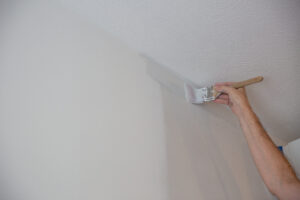Ogline Digital Review helps businesses scale and grow with proven direct response digital marketing strategies. They use a “focus-driven approach” to ensure tangible profit and growth for their clients.
However, relying on paid ads alone can be costly and not sustainable in the long term. Moreover, many people dislike advertising and use ad blockers. Also, ad agencies are not always transparent with their clients.

Dylan Ogline is a high school dropout who has built his digital marketing agency into a seven-figure business. He focuses on direct response digital marketing, which is designed to create high-ticket sales and leads. He also teaches others to start their own agencies through his program, Agency 2.0. In 2022, he plans to expand his agency to include offices in
In a crowded field of tech-startup wannabes, Dylan Ogline is fomenting a quiet revolution. The 32-year-old entrepreneur founded Ogline Digital and has built it into a seven-figure business by offering just one service, direct response digital marketing. His clients pay him a flat fee to manage their social media accounts and optimize their paid ads.
Digital marketing is an essential component of any small business’s advertising strategy. It helps businesses increase traffic, improve visibility, and grow revenue. But it’s important to know that not all digital marketing strategies are created equal. Some companies focus on paid advertising, while others are more focused on organic marketing methods. Both can provide great results, but a mix is usually best.
Ogline Digital specializes in implementing proven direct response digital marketing strategies for today’s ever-changing markets. Their clients range from auto dealerships to e-commerce sites and financial advisors. In addition to boosting online visibility, these services help businesses increase lead generation and sales. Moreover, they also help clients reduce cost-per-acquisition (CPA).
Ogline Digital offers free no-cost, no-obligation consultation calls for those interested in learning how to create a strong ad campaign. They specialize in Facebook, Google, and YouTube advertising. Dylan Ogline, who has been doing business since age 14, is a marketing expert featured in Forbes and Entrepreneur. He specializes in helping businesses with ad campaigns that bring real profit and growth. The company has a 5 star rating on Google and Upwork. However, the lack of balanced reviews on third-party websites makes it difficult to determine if the company has any flaws. It is also unclear what their refund policy is.
The company’s services are tailored to each client’s specific needs and budget. They can be as simple as creating a Facebook ad or as complex as launching a full-fledged marketing campaign. In addition to their paid marketing services, they offer free consultations.
Unlike traditional advertising agencies, Ogline Digital uses data and analytics to optimize their campaigns for the best results. This data allows them to track the effectiveness of ad campaigns, making it easier to measure ROI. They can even adjust ads for better results, saving you money in the long run.
Ogline Digital is a small, reputable digital marketing agency that specializes in paid advertising. Its clients include auto dealerships, e-commerce websites, financial advisors, and home service providers. Its services are backed by years of experience, a proven track record, and an extensive knowledge of the industry. They promise to deliver “focus-driven results” that bring real profit and growth for their clients.
Ogline Digital is a marketing agency that offers a variety of services. Their focus is on paid advertising, which uses online platforms to deliver ads to people who are interested in your products or services. These ads can be promoted through social media, search engines, and other websites. They can be displayed as clickable links, images, or video ads. The cost of each ad is based on the number of clicks, impressions, or completed actions generated. This type of marketing is ideal for businesses that want to achieve a specific goal.
Dylan Ogline started doing business at age 14, and he went on to build a successful seven-figure agency. His story is an inspiration for many entrepreneurs who are struggling to find the right way to grow their businesses. In his new book, he shares his lessons learned to help you create your own digital marketing agency.
He has a reputation for providing value and no-fluff services, and his team members are available to answer your questions. They also offer free consultation calls to discuss your marketing needs and goals.
The company also specializes in social media and pay-per-click campaigns. Their website claims that they are experts in “delivering focus-driven results to ensure tangible profit and growth” for their clients. Their clients include auto dealerships, ecommerce sites, financial advisors, mortgage brokers, and home service companies.
While it’s possible to generate income through paid ads, it’s not sustainable in the long run. It’s important to diversify your marketing strategy and invest in other tactics, such as content marketing. Otherwise, you’ll end up spending more money on advertising than you actually receive in revenue.
Another key consideration when evaluating marketing agencies is their refund policy. Some companies clearly state their refund policies on their websites, while others don’t specify anything. It’s important to read reviews from both sides of the coin, as well as compare prices to determine which agency is best for your needs.
Dylan Ogline is a high school dropout turned marketing expert and agency tycoon. He promises a value-based service that will help you meet or exceed your growth goals. His paid ads model is straightforward: pay for ad clicks, impressions, or completed actions.
However, total reliance on paid ads can drain your marketing budget. Plus, most people avoid ads, and 615 million use ad blockers. This means that a hefty monthly ad spend isn’t necessarily a good investment.
In addition to evaluating the agency’s pricing structure, you should also look at their strategy alignment and customer support. A reputable marketing agency should understand your business goals and create a tailored strategy to achieve them. They should also have a clear refund policy. Unfortunately, Ogline Digital’s website lacks specificity on this issue. You’ll need to ask about their refund policy before making a purchase. Also, make sure to read reviews from third-party sources for balanced opinions.
Dylan Ogline is a well-known marketing expert with a reputation for being transparent and ethical. He is also a successful entrepreneur, having started his first business at age 14. Ogline Digital specializes in paid advertising and can help you create powerful ad campaigns that generate measurable results. They offer free consultation calls to discuss your needs and can provide advice on how to improve your marketing strategy.
Reputation management is an essential aspect of any online business. It enables businesses to track brand mentions and monitor changes in the brand’s perception across different channels. It helps identify and address any potential crisis. It is important to maintain a positive online reputation in order to increase customer satisfaction and boost sales. However, the process is time-consuming and requires constant monitoring of social media, search engine results pages (SERP), and other platforms.
It’s also important to understand the difference between earned and owned media. Earned media consists of content posted on other websites or social media platforms, such as news articles, research papers, and influencer posts. Owned media refers to content produced by the business, including blog posts, case studies, and whitepapers. It’s important to have a balance between earned and owned media in order to achieve maximum visibility.
While hiring a paid ads agency can help you increase your business growth, it’s not as cost-effective as a comprehensive organic marketing strategy. In addition, over 615 million people around the world use ad blockers, which makes it harder for ads to reach them. A reliance on paid ads can also be dangerous, as it’s difficult to sustain growth when the campaign ends. Therefore, it’s important to learn about online marketing techniques and leverage a mix of paid and organic strategies for long-term success.



